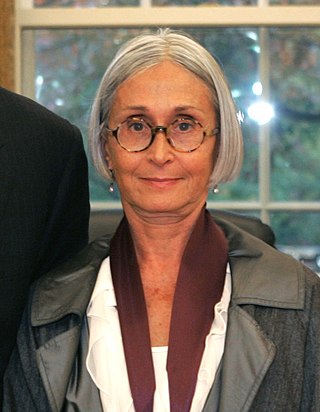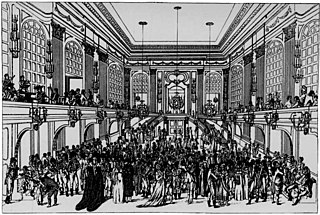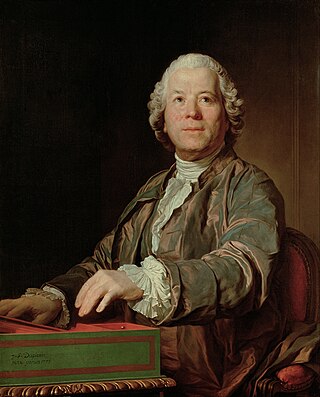Reviews
|
|
Delight of the Muses is a ballet made by New York City Ballet's ballet master in chief Peter Martins to eponymous music by Charles Wuorinen, commissioned by City Ballet as part of its commemoration of the bicentennial of the death of Wolfgang Amadeus Mozart. The composer has taken fragments of Mozart piano sonatas K.231 and K. 283 and music from Don Giovanni for this tribute to Mozart. The premiere took place on 29 January 1992 at the New York State Theater, Lincoln Center.
|
|

Wolfgang Amadeus Mozart was a prolific and influential composer of the Classical period. Despite his short life, his rapid pace of composition and proficiency from an early age resulted in more than 800 works representing virtually every Western classical genre of his time. Many of these compositions are acknowledged as pinnacles of the symphonic, concertante, chamber, operatic, and choral repertoire. Mozart is widely regarded as one of the greatest composers in the history of Western music, with his music admired for its "melodic beauty, its formal elegance and its richness of harmony and texture".

Twyla Tharp is an American dancer, choreographer, and author who lives and works in New York City. In 1965 she formed the company Twyla Tharp Dance, which merged with American Ballet Theatre in 1988. She regrouped the company in 1991. Her work often uses classical music, jazz, and contemporary pop music.

The Macedonian music refers to all forms of music associated with ethnic Macedonians. It shares similarities with the music of neighbouring Balkan countries, yet it remains overall distinctive in its rhythm and sound.

Idomeneo, re di Creta ossia Ilia e Idamante is an Italian-language opera seria by Wolfgang Amadeus Mozart. The libretto was adapted by Giambattista Varesco from a French text by Antoine Danchet, based on a 1705 play by Crébillion père, which had been set to music by André Campra as Idoménée in 1712. Mozart and Varesco were commissioned in 1780 by Karl Theodor, Elector of Bavaria for a court carnival. He probably chose the subject, though it may have been Mozart. The work premiered on 29 January 1781 at the Cuvilliés Theatre in Munich, Germany.

The Piano Concerto No. 20 in D minor, K. 466, was composed by Wolfgang Amadeus Mozart in 1785. The first performance took place at the Mehlgrube Casino in Vienna on 11 February 1785, with the composer as the soloist.

Johann Christian Innocenz Bonaventura Cannabich, was a German violinist, composer, and Kapellmeister of the Classical era. A composer of some 200 works, he continued the legacy of Johann Stamitz and helped turn the Mannheim orchestra into what Charles Burney described as "the most complete and best disciplined in Europe.". The orchestra was particularly noted for the carefully graduated crescendos and diminuendos characteristic of the Mannheim school. Together with Stamitz and the other composers of the Mannheim court, he helped develop the orchestral texture that paved the way for the orchestral treatment of the First Viennese School.

Mark William Morris is an American dancer, choreographer and director whose work is acclaimed for its craftsmanship, ingenuity, humor, and at times eclectic musical accompaniments. Morris is popular among dance aficionados, the music world, as well as mainstream audiences.

Bernard Howard Garfield is an American bassoonist, composer, teacher, and recording artist. Born in Brooklyn, New York, he is best known for his long tenure as the principal bassoonist of the Philadelphia Orchestra from 1957 to 2000.

David K. Israel is a composer, author, screenwriter, director and producer. In high school, he studied composition with jazz artist Pat Martino and the two musicians went on to co-write and record an album of songs together in 1987. In 1991, he was hired by The Estate of Leonard Bernstein to help edit and publish the late composer’s works. Mr. Israel worked on definitive editions of West Side Story, Mass, On the Town, and Wonderful Town. During these years he also worked as a professional composer fulfilling commissions by such groups as The American Symphony Orchestra, Twyla Tharp Dance, and The Paul Taylor Dance Company.
The Mostly Mozart Festival was an American classical music festival based in New York City.
The Suzanne Farrell Ballet is a ballet company housed at the Kennedy Center, Washington, D.C., and founded in 2000 by Suzanne Farrell, one of George Balanchine's most celebrated ballerinas, and a former New York City Ballet principal dancer. Until 2017, the Suzanne Farrell Ballet was a full-fledged company produced by the Kennedy Center and had performed there since 1999 in addition to presenting extensive national and international tours. In September 2016, the Center announced that the company would be disbanding at the end of 2017, citing "possibilities of new expansion" and indicating that Farrell would likely return to "full-time teaching."
The Orchestral Suite No. 4, Mozartiana, Op. 61, is an orchestral suite by Pyotr Ilyich Tchaikovsky, written in 1887 as a tribute to Wolfgang Amadeus Mozart on the 100th anniversary of that composer's opera Don Giovanni. Because this suite consists of four orchestrations of piano pieces by Mozart, Tchaikovsky did not number this suite with his previous three suites for orchestra. Instead, he considered it a separate work entitled Mozartiana. Nevertheless, it is usually counted as No. 4 of his orchestral suites.
Mozartiana is a ballet choreographed by George Balanchine to Tchaikovsky's Orchestral Suite No. 4, Mozartiana. The current version of the ballet was made for New York City Ballet's Tchaikovsky Festival, and premiered on June 4, 1981, at the New York State Theater. It is considered Balanchine's last major work.

The composer Wolfgang Amadeus Mozart wrote a great deal of dance music, both for public use and as elements of larger works such as operas, quartets, and symphonies. According to the reminiscences of those who knew him, the composer himself enjoyed dancing very much; he was skillful and danced often.

Don Juan ou Le Festin de Pierre is a ballet with a libretto by Ranieri de' Calzabigi, music by Christoph Willibald von Gluck, and choreography by Gasparo Angiolini. The ballet's first performance was in Vienna, Austria on Saturday, 17 October 1761, at the Theater am Kärntnertor. Its innovation in the history of ballet, coming a year before Gluck's radical reform of opera seria with his Orfeo ed Euridice (1762), was its coherent narrative element, though the series of conventional divertissement dances in the second act lies within the well-established ballet tradition of an entr'acte effecting a pause in the story-telling. The ballet follows the legend of Don Juan and his descent into Hell after killing his inamorata's father in a duel.
David Joseph Buch is an American musicologist.
Les petits riens is a ballet in one act and three tableaux by Jean-Georges Noverre, with music by Wolfgang Amadeus Mozart and other unknown composers, first performed at the Academie Royale de Musique in Paris on 11 June 1778. The three tableaux are described in the Journal de Paris:
The Divertimento No. 15 in B-flat major, K. 287, is a divertimento for two horns and strings by Wolfgang Amadeus Mozart. He composed the work in six movements in 1777 for the name day of Countess Maria Antonia Lodron. It is also known as the Lodronische Nachtmusik Nr. 2.
Divertimento No. 15 is a ballet choreographed by George Balanchine to Mozart's eponymous music. The ballet was made for the New York City Ballet. Balanchine first choreographed the score in 1952, for a ballet titled Caracole. In 1956, he planned to revive Caracole for a celebration of Mozart's bicentenary but made a new ballet to the same music instead. Divertimento No. 15 premiered on May 31, 1956, at the American Shakespeare Theatre, Stratford, Connecticut.